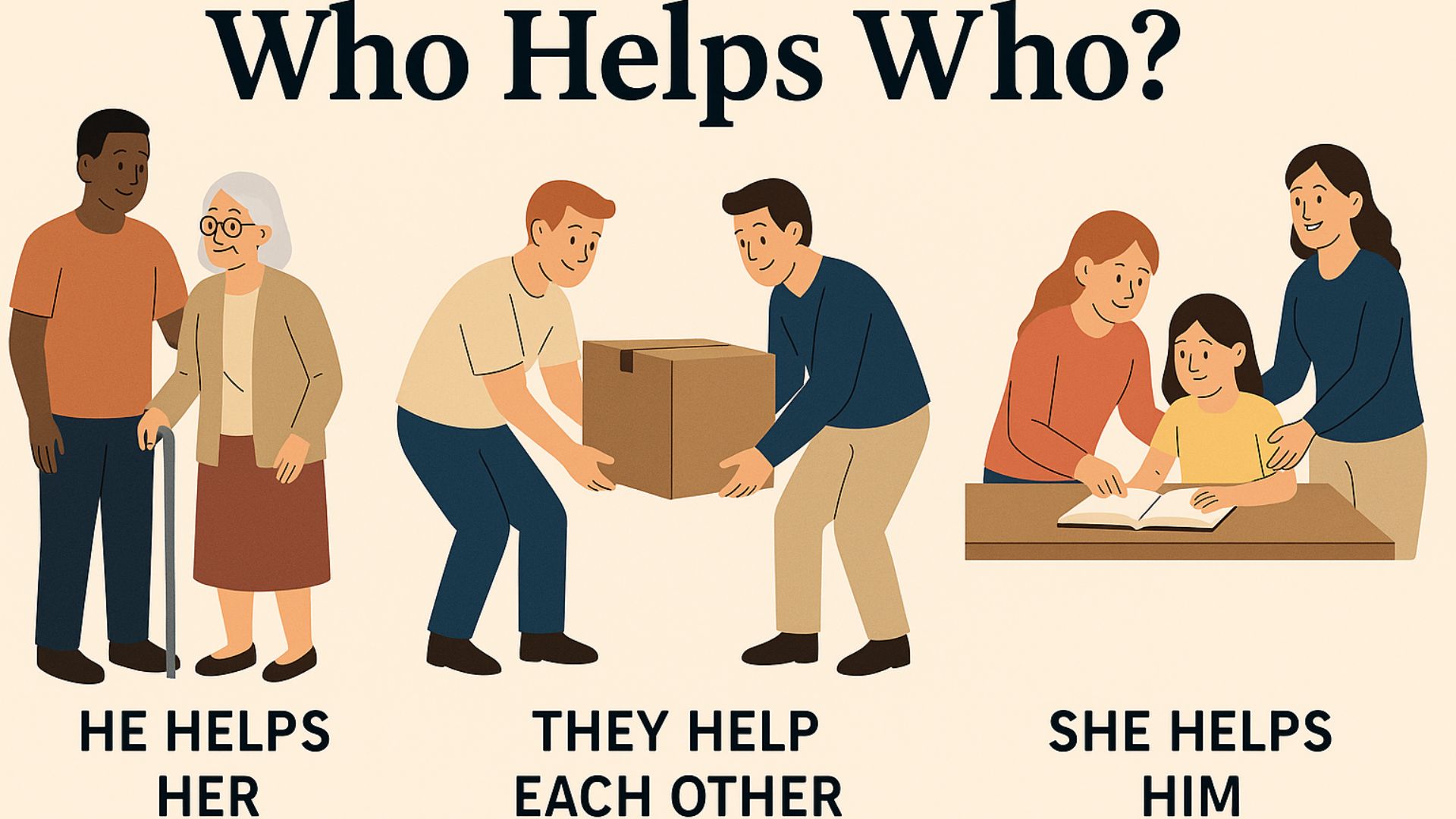Learn how to use subject and object pronouns with real-life ESL examples, clear grammar tips, and a free downloadable worksheet.

If you’ve ever said something like “Me help she” or “Her talk to they” — don’t worry. You’re not alone. Subject and object pronouns confuse many English learners, even at higher levels. But with a little help and real-life practice, you can learn to say it right every time. This lesson will show you exactly how to tell the difference between I and me, he and him, they and them — and how to use them in real conversations.
Guess what? When you click and buy through our links, you’re doing more than improving your game. You’re supporting us in a way that doesn’t cost you extra but helps us keep bringing you the best drills and tips. It’s a slam dunk for both of us!
📑 Table of Contents
- What’s the difference between subject and object pronouns in English?
- Real-Life Vocabulary: Who Does What?
- Quick Grammar Tip: How to Find the Subject and Object
- Free Download: Practice Worksheet
- Watch & Learn
- Final Thoughts
What’s the difference between subject and object pronouns in English?
Subject pronouns do the action in a sentence (like I, he, we), while object pronouns receive the action (like me, him, us). For example: “She helps him.” → She is the subject, him is the object.
| Sentence | Subject Pronoun | Object Pronoun |
|---|---|---|
| She helps him. | she | him |
| I see them. | I | them |
| They call us. | they | us |
| We talk to her. | we | her |
| He helps me. | he | me |
🧠 Quick Grammar Tip: How to Find the Subject and Object
Every complete sentence has a subject and a predicate.
The subject tells who is doing the action.
The object tells who receives the action.
Try this:
- Maria helps John.
➤ Subject: Maria → Pronoun = She
➤ Object: John → Pronoun = him
✅ Final sentence: She helps him.
📝 Free Download: Practice Worksheet
Want to try it yourself? Here’s a sample worksheet you can print or edit online:
🎬 Watch & Learn
Need a quick review? Watch this YouTube Short for a 60-second refresher on subject and object pronouns:
🧠 Final Thoughts
Using subject and object pronouns correctly is a major step in speaking clear, natural English.
Whether you’re talking about helping a friend or calling a family member, knowing who does what and to whom will help you sound more fluent and confident.
Practice with your classmates, speak out loud, and don’t be afraid to make mistakes.
That’s how you learn!
📣 What do YOU think?
Who helps you in your daily life? Leave a comment below and try using both a subject and an object pronoun in your answer!
I’d love to hear from you. I always reply.
📥 Access all free ESL lessons:
Join my Free Resource Library »
👥 Practice English with real people:
Join the Study Buddy Project »
🌍 Want more practice? Try these recommended tools:


This was a super clear and engaging explanation of a topic that often confuses learners—great job breaking it down in a way that feels practical and easy to apply in real life!
In my experience helping others with English, subject and object pronouns are one of those “basic” things that still trip up even intermediate learners—especially in conversation. Your use of real-world examples is a great way to reinforce the rules.
One question I had: do you find that practicing with spoken roleplays or written exercises works better for helping students really internalize the difference? I’ve seen some success with mini-dialogues where they have to fill in the blanks.
In my opinion, lessons like this that bridge grammar with everyday usage are what really stick. Thanks for making grammar feel approachable and useful!
Hi Tommy, welcome back. Thanks again for your comments. Yes, I find practicing spoken role play in real life scenarios helps but I also believe the worksheets and fill-in-the blank exercises are helpful An English class is about four basic elements: Reading, writing, listening, and speaking. I try to employ all of them in every lesson.
KBob